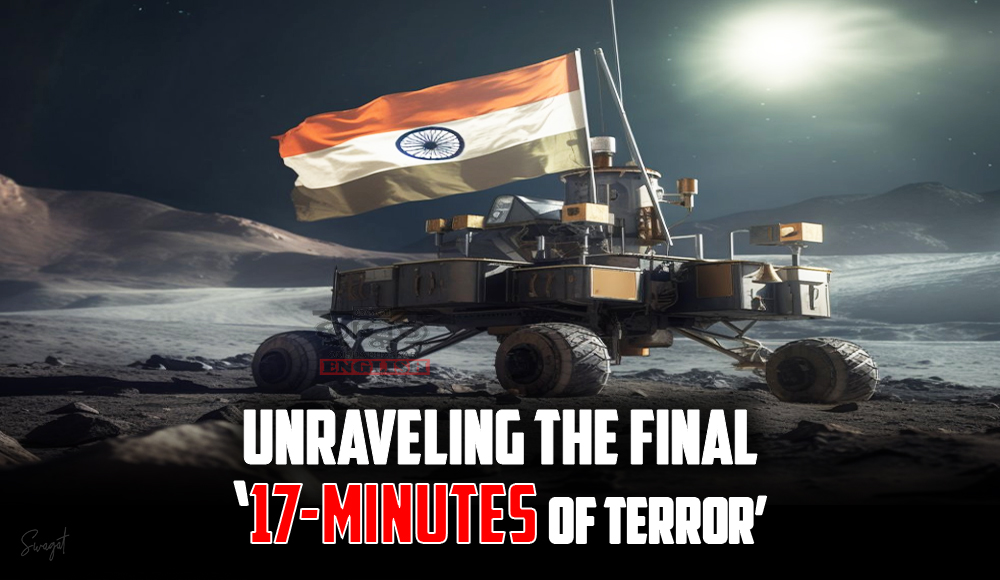India successfully landed Chandrayaan-3 on the Moon’s surface on August 23, 2023, becoming the fourth country to achieve this feat following Russia, the United States, and China and the first country to land near the South pole of the moon. The successful landing of the Vikram lander marks a significant step forward, paving the way for valuable scientific exploration by the Pragyan rover.
The touchdown process initiated at 5:44 PM, setting off what’s famously known as the ’17 minutes of terror.’ The Vikram lander, housing the Pragyan rover designed for a 14-day lunar surface mission, underwent an automated ‘power descent’ sequence guided solely by onboard systems. This autonomy showcased India’s technological prowess as the team at the Indian Space Research Organisation managed the operation remotely.
The ‘power descent’ phase was meticulously structured in four stages. The initial phase involved ‘rough braking,’ rapidly reducing the lander’s horizontal speed from over 6,000 km per hour to nearly zero. This was a critical step to safely slow down the lander. Following this, the ‘attitude hold’ phase ensured the lander maintained a specific altitude while transitioning from a horizontal to a vertical orientation. Subsequently, the ‘fine braking’ phase spanned 175 seconds, covering the last leg of the journey to the Moon’s surface while adjusting its position. Finally, the ‘terminal descent’ phase brought the lander to its ultimate landing spot.
Notably, Chandrayaan-2’s setback occurred between the ‘attitude hold’ and ‘fine braking’ phases in a previous attempt. With Chandrayaan-3’s successful landing, the focus now shifts to the Pragyan rover nestled within the lander. However, a waiting period of approximately three hours follows the landing. This interval allows the lunar dust stirred during the landing to settle, safeguarding the rover and its instruments from potential damage.




Comments are closed.